
Knowledge Hub
Resilience is a word we use a lot at Concern, but what does it mean? In general terms, it is a characteristic that describes a person’s capacity to cope in difficult times. But in humanitarian aid and development work, the word ‘resilience’ is used in a very specific way to discuss a community’s response to disasters, shocks and stresses – these can be anything from drought, floods, disease, landslides and conflict to earthquakes.
Every time vulnerable communities experience a crisis, they are forced deeper and deeper into poverty. Even small-scale ‘everyday emergencies’, such as flash floods or one lost harvest, can have a major impact on the lives of people living in extreme poverty.
By helping communities build their resilience, we can protect lives and livelihoods and prevent people from falling deeper into poverty.
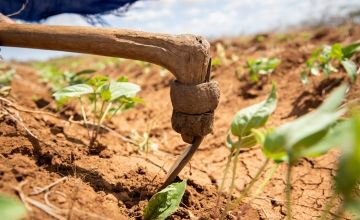
Changed understanding of resilience
The term resilience has been used in disaster response since the 1970s. Early understandings of resilience emphasised communities ‘bouncing back’ or absorbing changes following a crisis.
But some people argued that this approach focused too narrowly on responding to disasters rather than preventing or preparing for them, and the outcome was only to return affected communities back to the way things were before.
But from the 2000s, the humanitarian development sector embraced the concept of adaptation and transformation. Resilience was defined more as a process of strengthening the capacity of people and communities to anticipate, manage, recover and transform from crises - otherwise known as ‘building back better’.
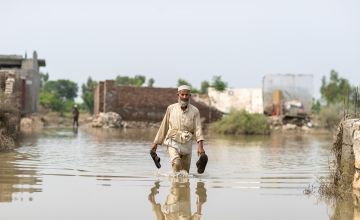
Definition of resilience
So what do we mean when we talk about resilience? While there is no consensus on a definition, it is possible to identify common elements to broadly explain what it is.
The US Agency for International Development (USAID) describes resilience as “the ability of people, households, communities, countries and systems to mitigate, adapt to and recover from shocks and stresses in a manner that reduces chronic vulnerability and facilitates inclusive growth”.
While the UK Government Resilience Framework (2022) defines resilience as the “ability to withstand or quickly recover from a difficult situation, but also to get ahead of those risks and tackle challenges before they manifest”.
Both definitions highlight that resilience is more than just surviving adversity. It is about supporting communities to improve their wellbeing in the face of risks and shocks. The UN agency for the coordination of disaster risk reduction (UNDRR) even goes as far as to describe resilience as “the ability to flourish in the face of disaster risk”.
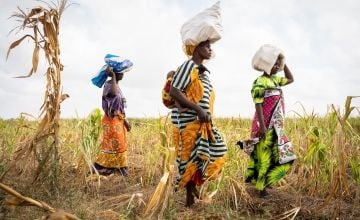
5 ways to build community resilience
What are some of the key ways to build community resilience in the face of humanitarian threats?
1. Reduce risks and impacts
Communities can take action to lessen the risks they face, particularly from climate-related hazards, and minimise the impact of shocks and stresses in terms of scale, intensity and frequency.
By implementing natural resource management and conservation agriculture techniques, such as reforestation and slope stabilisation, communities can actively reduce risks associated with drought, flooding, soil erosion and landslides, while at the same time improving livelihoods.
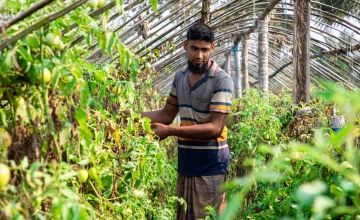
2. Diversify livelihoods
Helping people to strengthen and diversify their livelihoods can increase resilience by ensuring they have the resources to adapt to disaster risks and shocks.
People who rely on one livelihood for a living – particularly from farming - are more exposed and at risk in the face of climate extremes. But when they find other ways to generate an income their vulnerability is reduced considerably. Providing skills and business training, start-up grants and access to community savings and loans groups are effective means to help diversity livelihoods.
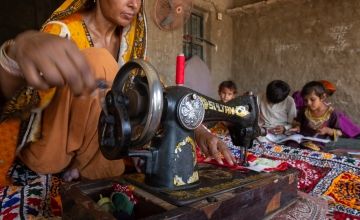
3. Build capacity to cope and recover
Coping and recovering capacities help communities survive and recover. Safety nets, such as cash-for work schemes, social protection and cash assistance are all resilience mechanisms that can help prevent people falling deeper into poverty when a disaster hits.
This approach might also include community-based grain and fodder stores and seed banks for use during droughts, restocking herds and savings groups to improve livelihoods and as a source of cash during emergencies.
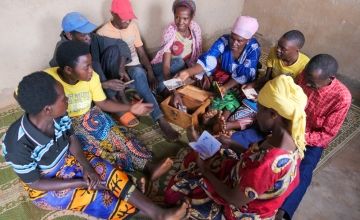
4. Be ready to respond
No matter how successful resilience measures are, disasters will continue to happen, and emergency responses will continue to be needed.
Making sure that vulnerable communities are prepared in advance to respond and that the processes and mechanisms are in place and ready to be activated immediately are ways to build response capacity. This can be done by establishing disaster management committees and early warning systems.

5. Address vulnerabilities
Disasters affect the poorest and most vulnerable communities the most severely. That is why programmes to increase resilience must address the underlying causes of inequality and meet the specific needs of people who are vulnerable and most at risk.
When people move out of poverty, their ability to cope with major shocks and day-to-day stresses also improves.
How Concern helps communities build resilience
Concern has been working to build resilience and improve the well-being of communities in places prone to disasters, such as Bangladesh, Ethiopia, Kenya, Malawi, Pakistan, Somalia and South Sudan.

Our partnership with Zurich Flood Alliance
A good example of our resilience efforts in action is in Bangladesh - one of the most climate-vulnerable countries in the world, where we are working to reduce the impact of floods on people and increase the ability of communities to thrive.
Funded by the Zurich Foundation as part of the Zurich Flood Resilience Alliance (ZFRA), our programmes support communities to build their resilience using flood tolerant seeds to help farmers cultivate crops through the flood season and maintain their livelihoods.
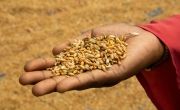
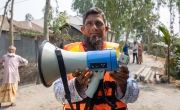
Our ZFRA partnership also enables us to support communities in Malawi’s Nsanje district - one of the country’s flood hotspots. Our work includes rehabilitating dykes and improving drainage, and encouraging people to build homes in safe zones. We are also working to strengthen early warning systems by installing river gauges.
Building Resilient Communities in Somalia (BRCiS)
In Somalia, through our Building Resilient Communities in Somalia programme, we are supporting communities who are facing more frequent and longer-lasting droughts, and which are becoming more severe as the climate changes.
Safety net mechanisms are now in place to support communities once an early action drought warning is triggered. These generally include cash assistance, water vouchers, health and hygiene kits, mosquito nets and fodder for livestock to help communities cope in times of crisis.
Building Resilience and Addressing Vulnerability to Emergencies (BRAVE)
In Pakistan, our work focuses on safeguarding vulnerable communities from climate-induced hazards such as heatwaves, flooding and droughts.
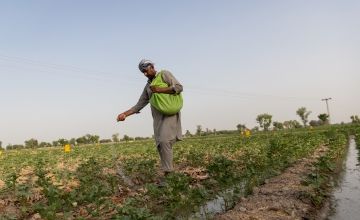
Our recently launched Building Resilience and Addressing Vulnerability to Emergencies (BRAVE) programme in Pakistan, funded by the UK’s FCDO, aims to support communities by piloting climate adaptation strategies such as conservation agriculture and climate-smart farming, which include innovative techniques to improve soil quality and crop yields in the long-term.
These programmes aim to shift the narrative for supporting at-risk communities away from disaster response and recovery to preventative resilience so that the shocks and stresses they might experience do not have a significant negative effect on people's lives and livelihoods.
Other ways to help
Donate now
Give a one-off, or a monthly, donation today.
Join an event
From mountain trekking to marathon running, join us for one of our many exciting outdoor events!
Buy a gift
With an extensive range of alternative gifts, we have something to suit everybody.
Leave a gift in your will
Leave the world a better place with a life-changing legacy.
Become a corporate supporter
We partner with a range of organisations that share our passion and the results have been fantastic.
Create your own fundraising event
Raise money for Concern by organising your own charity fundraising event.





